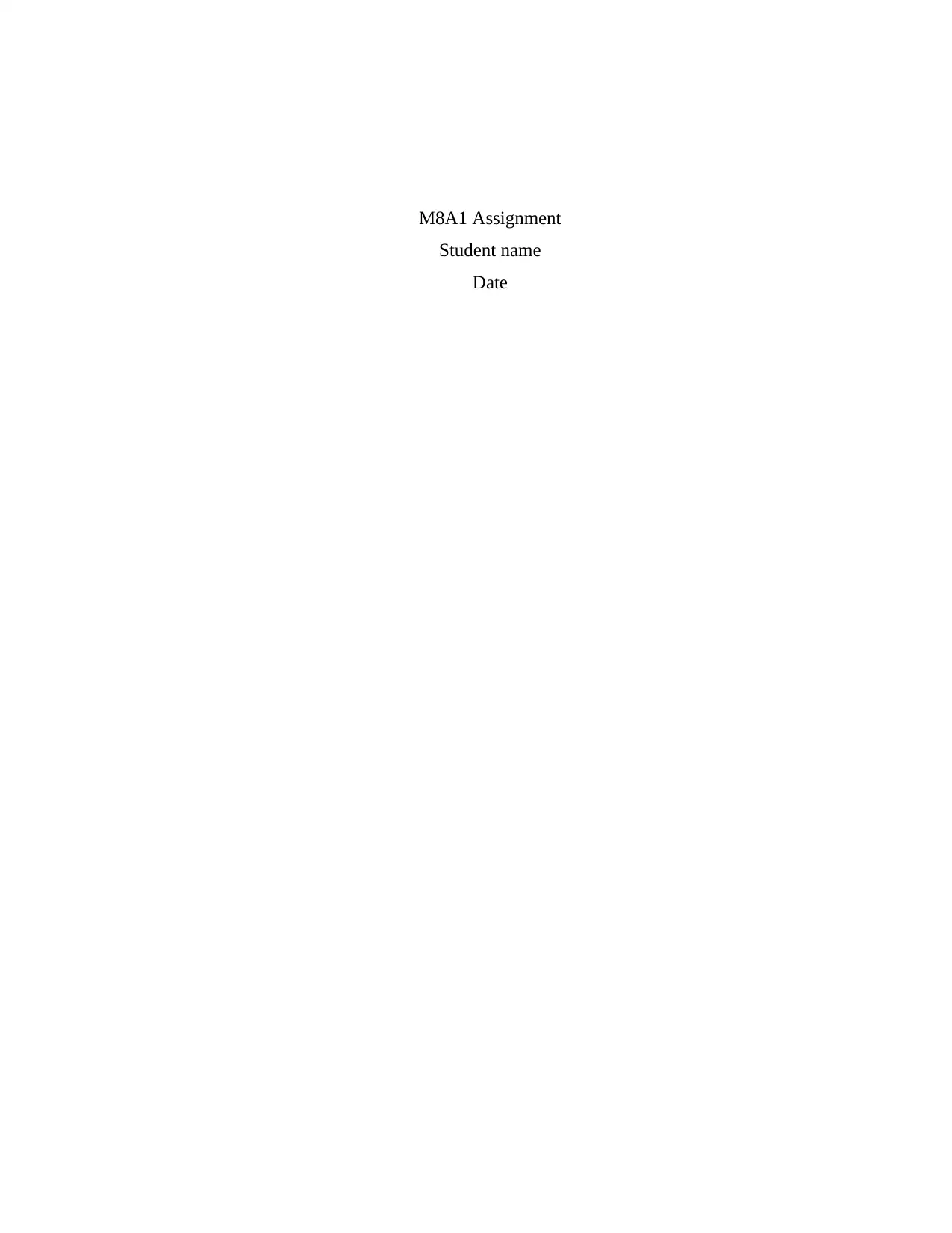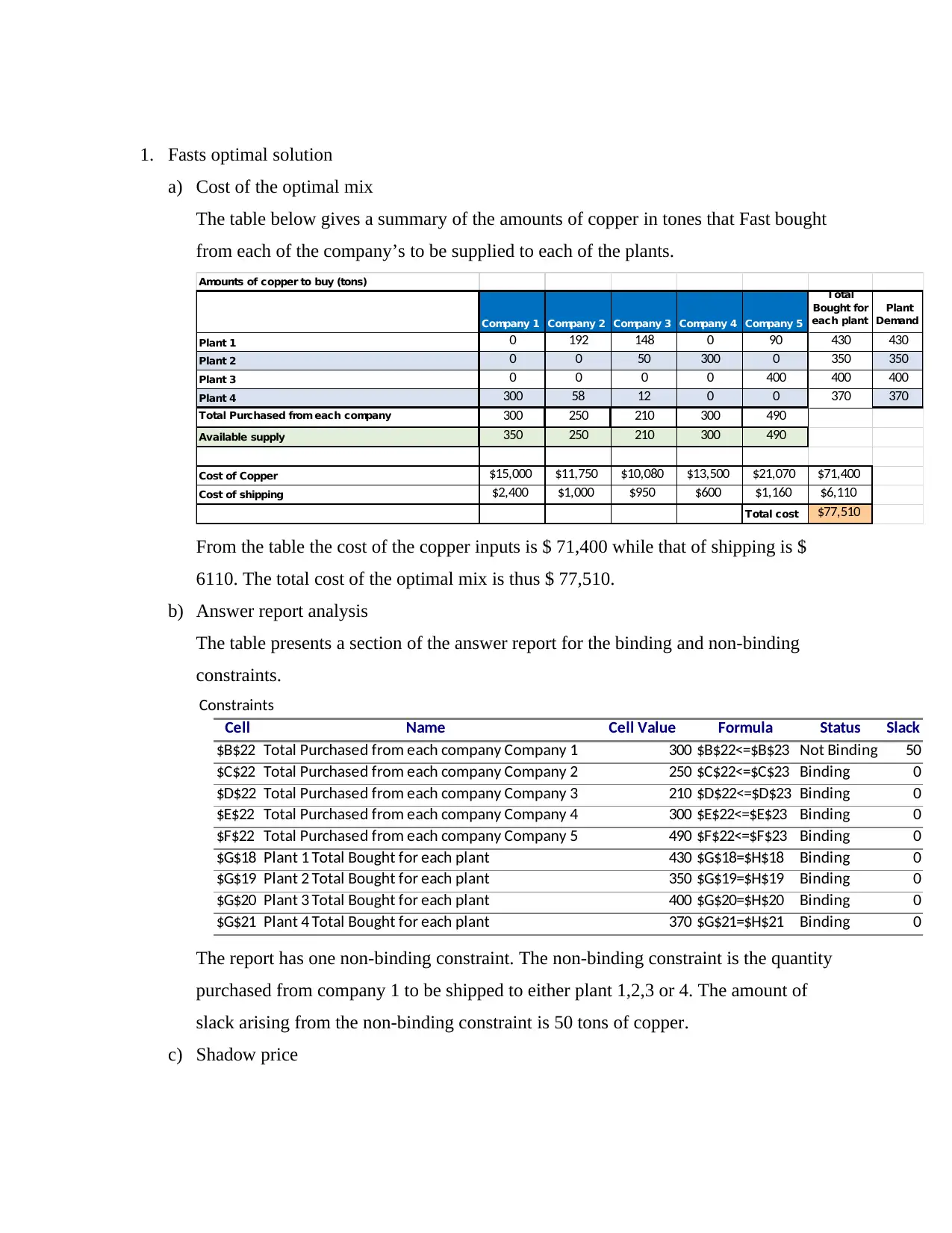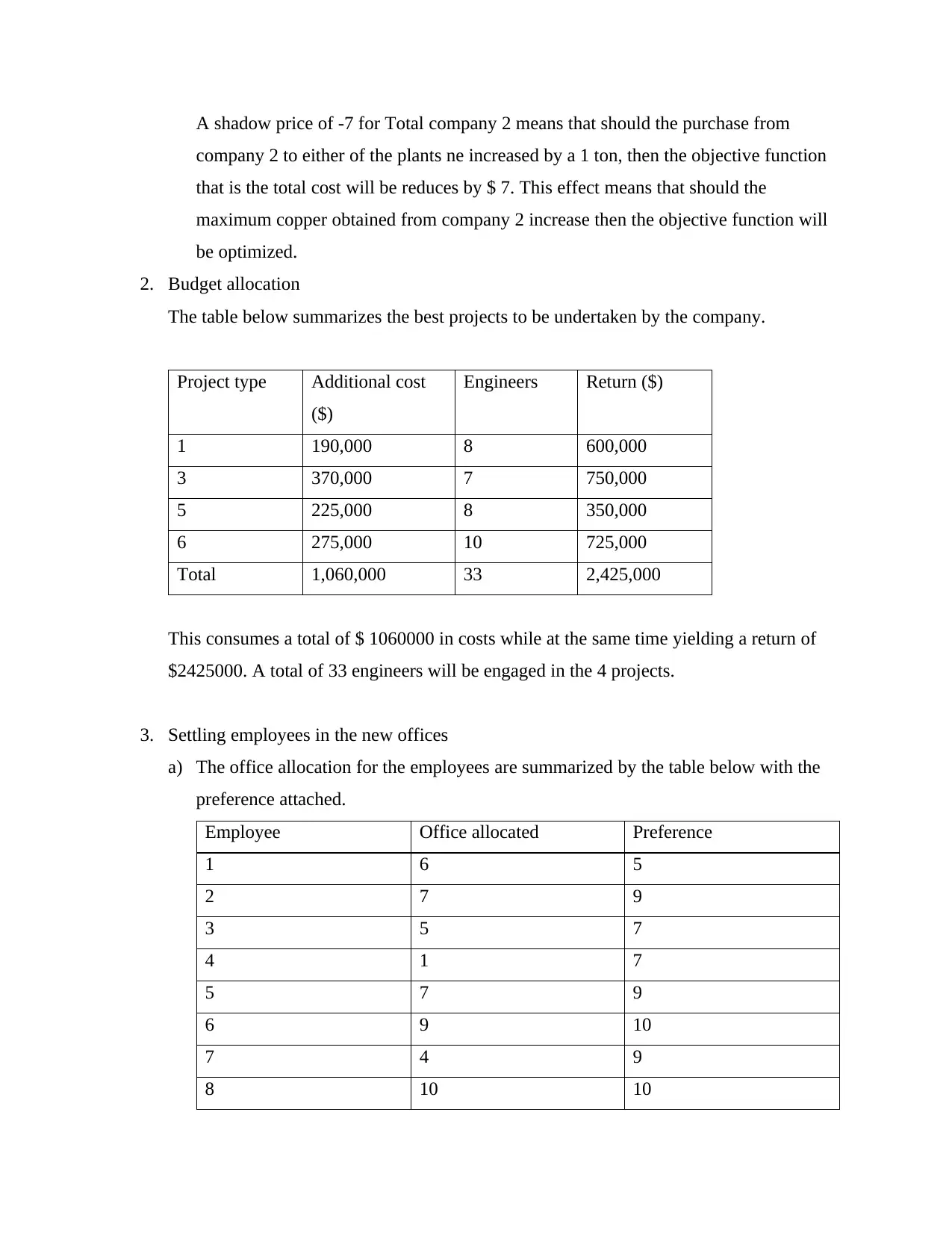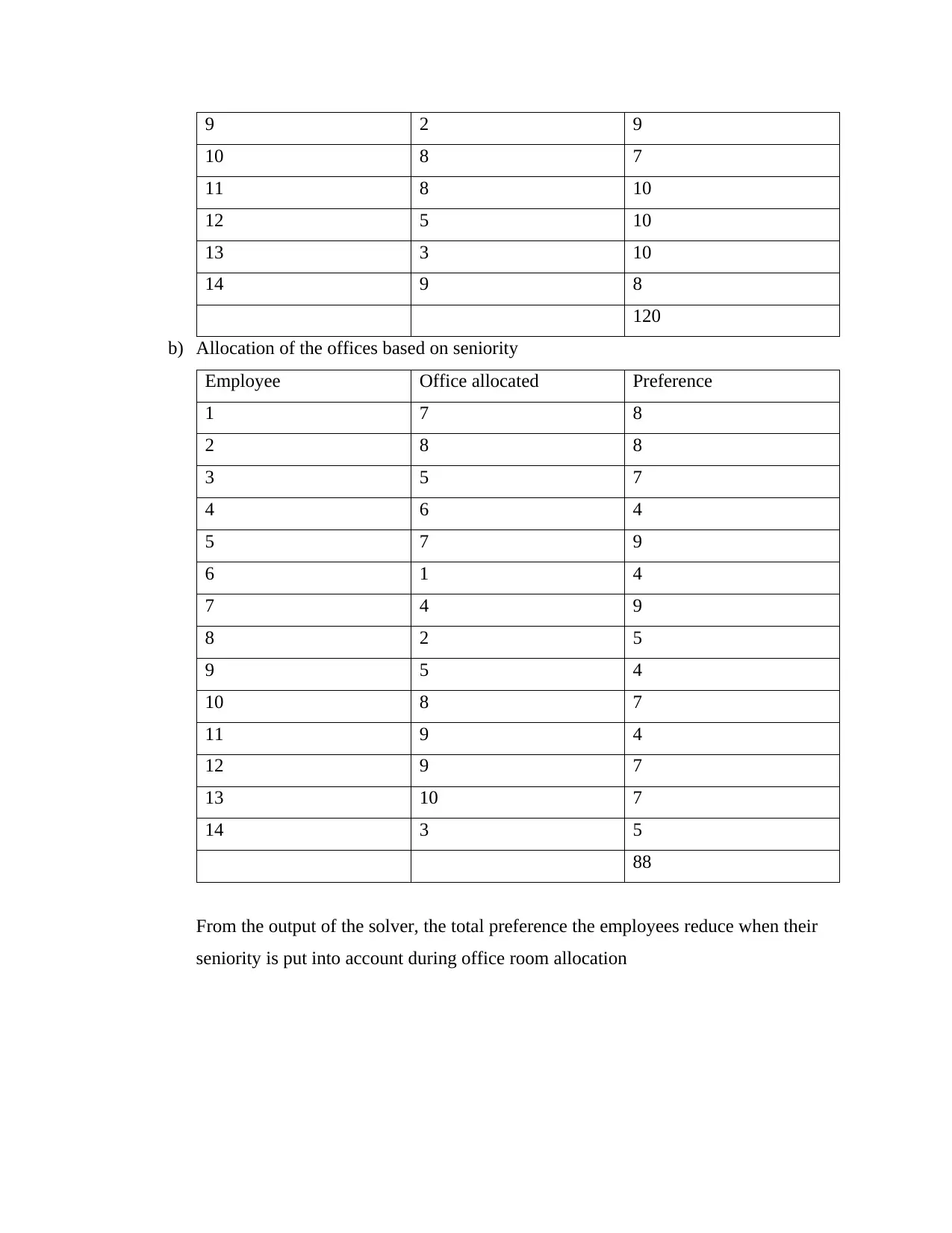M8A1 Project: Detailed Analysis of Optimal Business Solutions
VerifiedAdded on 2023/01/23
|4
|780
|37
Project
AI Summary
This project presents an analysis of optimal solutions for a business, addressing key aspects such as cost optimization, budget allocation, and employee office allocation. The first section focuses on minimizing the cost of copper inputs across multiple plants, identifying the total cost, and analyzing binding and non-binding constraints, including a shadow price analysis. The second section delves into budget allocation, presenting the best projects to undertake based on costs, returns, and engineer requirements. The final section addresses employee office allocation, considering both preference-based and seniority-based allocation strategies. The project provides detailed tables and analyses to support the findings, offering insights into efficient resource management and decision-making within a business context.
1 out of 4




